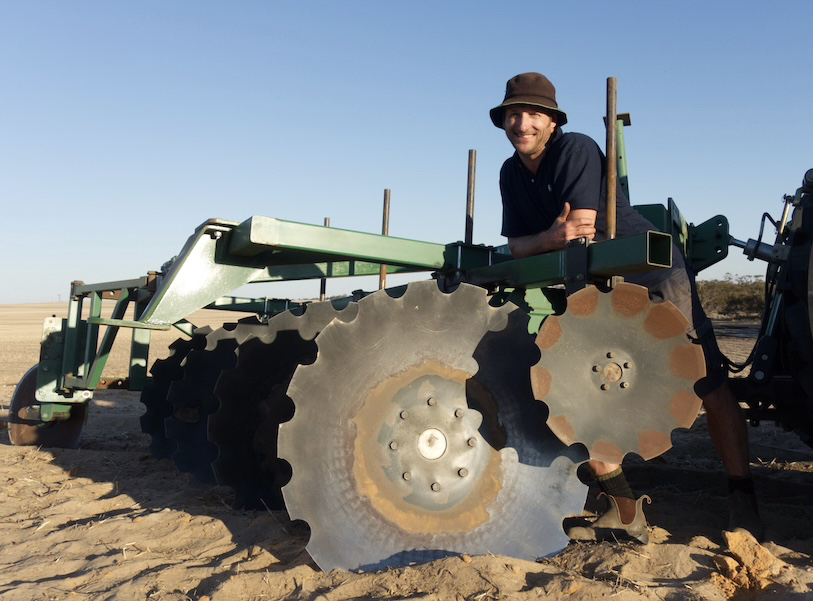There were golden undertones in the soil churn channelled behind a heavy-duty machine as it moved across a paddock mixing non-wetting yellow sand with red clay in the southern Mallee region.
This proof-of-concept machine was being put to the test ameliorating water-repellent surface sands on Rob Pocock’s 3400-hectare property at Lameroo, South Australia.
For Rob, it was a research and development dream come true.
The fourth-generation grower came up with the concept for the prototype 'high-work-rate' machine, which has since become a reality through collaborative research from 2018–20.
It was developed as part of GRDC-invested research led by Mallee Sustainable Farming (MSF) in partnership with the University of South Australia and Adelaide-based machinery manufacturer John Shearer.
The outcome is a ‘plough and sow’ soil inversion disc plough built to simultaneously ameliorate non-wetting sands and sow crops in a single pass.
Its aim is to provide a cost-effective alternative to inversion mouldboard ploughing and spading machines. Soil inversion disc ploughing, using ‘old’ modified plough technology, has attracted considerable interest from growers as a low-cost alternative to spading, especially in low-rainfall areas of the southern cropping region. It also has potential to be used as an alternative to clay spreading where the machine’s discs can access clay layers occurring in the top 30 to 40cm of the soil profile.
When GroundCover™ visited Rob’s farm, University of South Australia research engineer Dr Chris Saunders was performance-testing its soil mixing capabilities on a problematic sandy rise.
Dr Saunders says the machine was originally built to completely bury non-wetting surface sands in the soil profile, effectively mixing the topsoil that constrains crop productivity with underlying layers of sand, and to a lesser extent, clay.
“Complete burial of water-repellent sands was the foremost aim of the machinery design,” Dr Saunders says.
“But by changing some of the machinery components and settings, soil mixing can also be achieved.”
Prototype design

University of South Australia research engineer Dr Chris Saunders takes a break from performance-testing the prototype machine on Rob Pocock's farm at Lameroo in the SA Mallee. Photo: Clarisa Collis
The machine blueprint, originating from Rob’s basic concept, has evolved to incorporate additional design features geared to optimise its efficacy and efficiency.
These features were based on the findings of an MSF survey to gauge machinery specifications pertinent to Mallee growers, and a theoretical study exploring disc parameters and configurations to maximise soil burial.
Its design was shaped by five main objectives: soil burial, disc penetration efficacy, two-way reversible plough flexibility, operating speed and one-pass sowing capability.
For instance, paddock testing showed the prototype machine achieved total burial of non-wetting sands at a soil depth of 40 centimetres travelling at 10 kilometres per hour.
This is coupled with the option of a two-metre-wide tow-behind modified seeding unit that enables growers to establish ground cover on erosion-prone soils as part of one-pass amelioration works.
Rob says the test run on a 4ha delved paddock area demonstrated the cost benefits and efficiency gains that stem from the machine’s high-capacity work rate and reduced maintenance requirements, particularly compared with spading machines.
“It also has the potential to be used on our soils that have not been delved or clay-spread to ameliorate challenging non-wetting sand – straight up – with just one machinery pass,” Rob says.
Using steel rollers to level and smooth the soil surface in the wake of the machine, Rob was able to quickly establish Compass barley on the ameliorated paddock area. However, he plans to road-test the machine’s seeding capacity on his property this season.
More information: Rob Pocock, 0438 824 758, robert@lampata.com; Chris Saunders, chris.saunders@unisa.edu.au

























































